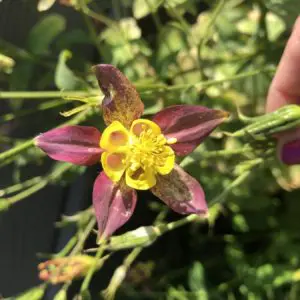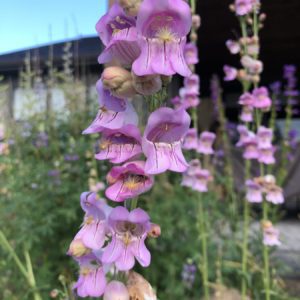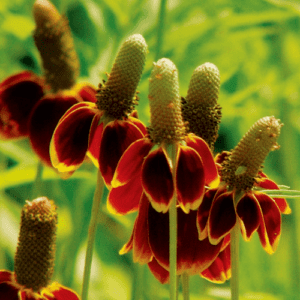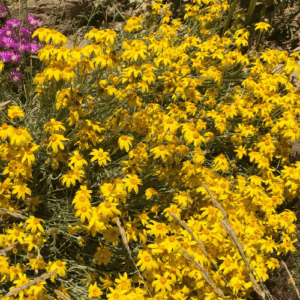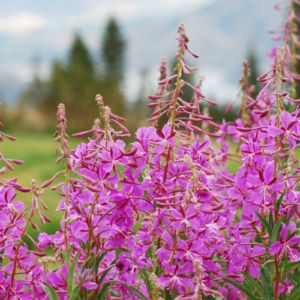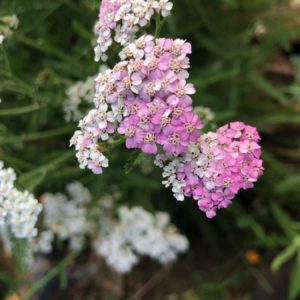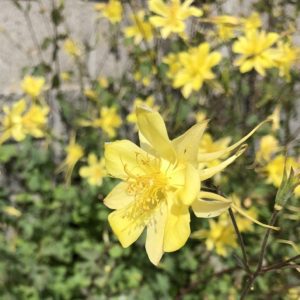
The Five Beautiful Flowers You Should Plant NOW! in Fall
Happy Fall!
As my garden starts to wind down for the year, I can’t help but celebrate all the incredible flowers that bloomed, the bumble bee traffic we enjoyed, and that I (once again) created a wonderful bird oasis for hummingbirds and songbirds. Reflecting on this year’s successes makes me even MORE excited to use what I’ve learned to grow even more successfully next year. I love to use my Garden Journal (see how I designed one here) to jot down ideas for next year – what to do, and definitely what not to do! That’s how this garden grows!
In my mind, Spring is just around the corner! A few months from now, I’ll get that itch to start planting seeds (check out my top tips for actually succeeding at seed growing!) and checking the ground each day for the first signs of Spring blooms.
Do you love the first signs of Spring, too, as they pop up from beneath the melty Earth’s surface? The budding lilacs and the brave little tulips? In order to enjoy the gorgeous flowers of Spring, it’s essential to take some time today – during the cooling months of September through November – to invest in your garden and in yourself. It’s time to plant bulbs!
The great news is that there is no easier flower to grown than those I’m about to share with you. Each of them grows from bulbs – and are literally SET IT AND FORGET IT! You don’t need to amend with any extra water; the water stored over the Winter is adequate to see these bulbs through their lifecycle this year. Fortunately for us, visit any hardware or big box store and you’ll find a few neat rows of “Fall Bulbs” ready for you to plop into the ground today.
Better yet – let Amazon deliver them to your door! Check out their extensive list of Fall bulbs here.
There are 5 types of bulbs you simply MUST plant right now! That’s not because they’re finicky and have to go in this week. It’s because they’re absolutely GORGEOUS and so easy to grow! And by easy to grow, I mean – dig a hole, drop the bulb in, bury it, and forget about it until Spring. No water, no mulch, no amendments required. (You’re welcome to do these things if you like, though!)
I am a very thrifty gardener, which is another one of the reasons why I love planting Fall bulbs. These are magic, multiplying flowering bulbs that produce even more flowers each year! After the flowers bloom, try and avoid the temptation to cut back and dispose of the flower-less foliage. All that greenery is still working hard to store energy and nutrients in the form of MORE BULBS! These additional bulbs can easily be dug up and divided in the Fall or Spring – or leave them for more bountiful clusters of flowers next year!
I’d be lying if I said that I was listing the following in order of my favorites; instead, consider this a list to be a tie for the Top 5 Fall-planting, Spring-blooming bulbs! Therefore, in no particular order, here are my favorite Fall bulbs to plant today.
Crocus
Ah the first signs of Spring – crocuses! These little ground-covering blooms come in all kinds of colors. These fun little flowers will actually break through the crunchy icepack and snow in your lawn and start to reveal themselves early in Spring. They are early bloomers if I’ve ever seen them!
Crocus bulbs are fairly inexpensive so don’t be surprised when their sold in quantities of 50 or 100. You’ll actually want to plant many because 1) they’re fairly small flowers, so although they’re gorgeous, they are petite and low to the ground. 2) A ground cover of crocuses is a beautiful sight to see! These (like all other bulbs) multiply to give you a thicker carpet of color year after year.


Crocus bulbs are super easy to find and even easier to plant. You only need to bury them a few inches beneath the surface and are great to intersperse between late Spring/Summer flowers that take a while to bloom. By the time they do, crocuses will have come and gone. They are great for providing early pollinator food, too. What’s not to love?
Hyacinth


Beautiful hyacinth is next! There are two types of hyacinth with which you may be familiar – both are exquisite in their simplicity and beauty! The one with which most people are acquainted is the dainty Grape Hyacinth (right), also called Muscari (Muscari armeniacum). These precious mounds of purple bells add a pop of color, dimension and texture among any Spring bed. I love to intermix these sweet little guys among beds of white tulips or as a border in a “anything goes” bed. These are “a dime a dozen,” so don’t be afraid if the bag says there are 100 in each. They are super quick to plant and can easily go in to one of the other larger bulb’s holes for stellar companion planting.
A word of caution (but don’t be frightened off!): Always be extra careful when handling hyacinth bulbs. There is such a thing called “Hyacinth Itch” (I learned that one through experience) that one can get after handling hyacinth bulbs. While planting mine last fall, I rubbed my gloved hand along my chin to push my hair aside and broke out in a major itch-fest for about an hour (until the Benadryl kicked in). I think it stems from tiny little sharp fibers found on the bulbs that are very irritating to the skin. Wear gloves PLUS be extra cautious to wash your hands and gloves before touching your skin. I had this reaction with the large hyacinths but do be cautious with all types.
Water-Wise Flower Seeds Available NOW!
Liatris
Liatris spicata (also known as gayfeather or blazing star) are less well known but one of the most intriguing flowers in any garden. I get TONS of compliments on mine and they add lots of interest and texture! These are incredible flowers that you must have in your garden! Liatris are like nothing you’ve ever seen before – they remind me of a flower you would find in a Dr. Suess book! Standing straight up in a compact but color-packed shape, these tall flowery fronds are hummingbird and bee HEAVEN!
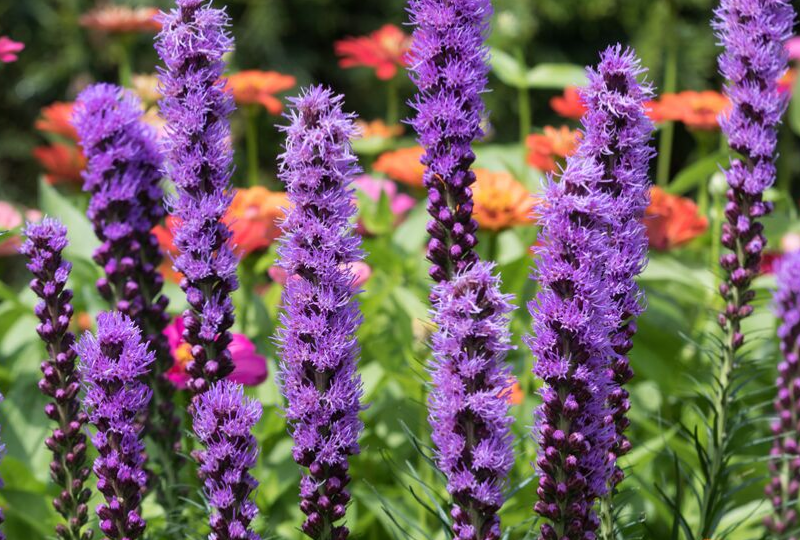
Liatris are a wonderful plant to put in the background of any garden bed. That’s because they take up very little space, add a huge pop of texture, and multiply modestly in your garden. Liatris come in a range of purple hues, as well as pinks and whites. They are a must-have for your garden, regardless of how much space you have! These sweet, complex beauties bloom in mid- to late-summer and are a ton of fun! These are the only exception to my “no need to add water” statement above. Since these bloom through the Summer, be sure to plant them in one of your water zones. They don’t need much, but they do need something.
Each Fall or Spring you can dig and divide these spreading bulbs. They even spread themselves by seed!
Daffodils
Daffodils (aptly named Narcissus) are a sure sign that Spring has finally arrived! They are the quintessential Spring bloom, often visible in Easter images and bouquets. What I love most about daffodils is the strong simplicity in each plant. They have sturdy, thick green foliage that supports huge, paper-transparent blooms of countless colors.
Daffodils come in so many colors – once you start, you’ll want to get your hands on all of them! There’s the classic yellow daffs, whites, peaches, orange and everything in between. Their size varieties mean there’s a flower for every garden size out there! They range from petite in size (like paperwhites) to large and boastful. Daffodils look gorgeous in your Spring vases and add a huge pop of color and dimension to any space.


Tulips
Ask any person out there to name a flower of Spring and they will quickly mention tulips. And rightly so! Tulips blooming in yards and gardens are a perfect sign that Spring has, indeed, arrived. These are the true flowers behind the phrase, “April showers bring May flowers.”



Tulips also come in every color of the rainbow, and their heights and bloom sizes vary. There’s the classic Darwin tulips, petite tulips, and everything in between. These flowers make beautiful additions to any Spring vase arrangement.
Don’t be tempted to snip away the green foliage after the flowers are spent! The greenery works hard all Summer to store energy in the form of more bulbs; these can be divided in the Fall or in the Spring.
Tulips are really easy to plant, though they need slightly deeper holes than our friends the crocuses or grape hyacinths. Use a tulip bulb digger (see below) or small trowel or shovel to dig a hole approximately 6-8″ deep to give these a nice warm bed for winter and a sturdy place to develop their roots system.
Tulips are super simple to grow, too! Just like the bulbs listed above, just plunk your tulip bulbs into the ground, point the pointy part skyward, and bury them. In no time at all, you’ll be treated to a rainbow of colors in your garden.
Plant Bulbs Today!
Are you planting Fall bulbs? Tell us what you’re planting! And here’s to an amazing Spring garden!
You May Also Like

Spring Garden Prep – Simple Steps to Get the Garden Ready for Growing
March 26, 2019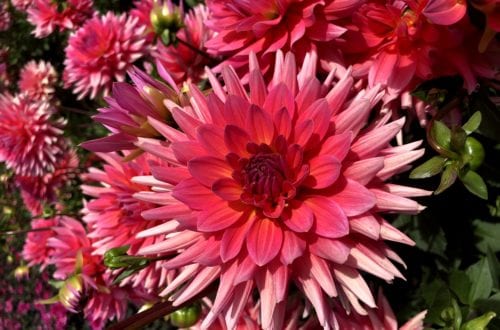
Swan Island Dahlias Festival: A Must See in Oregon
September 19, 2019


